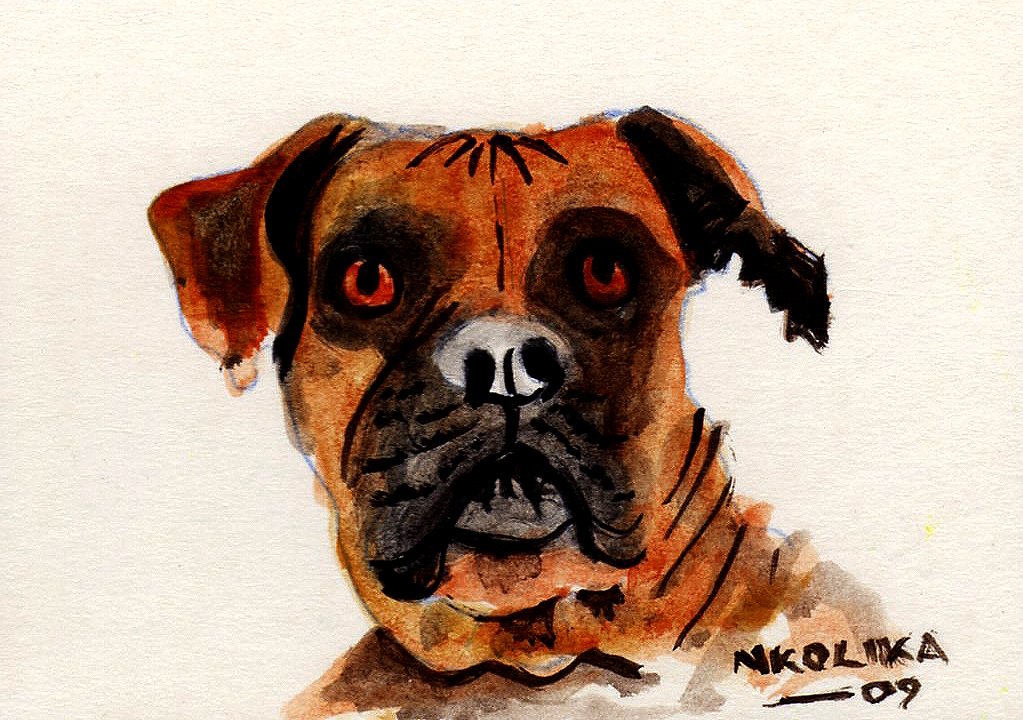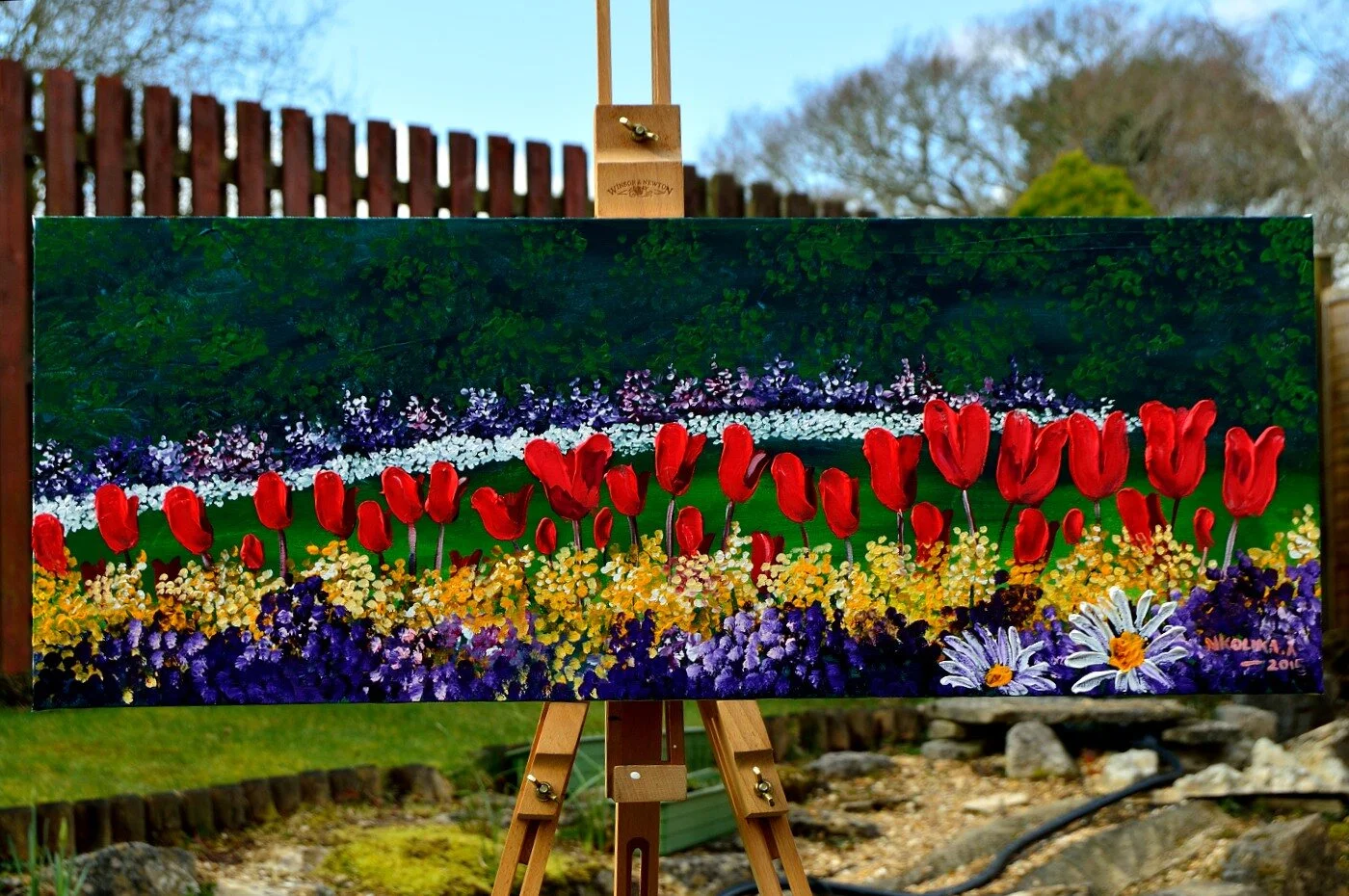
News
Here you would find news about Nkolika Anyabolu. It includes any interview, newspaper publication or magazine publications featuring the artist.
NEWS
Welcome to the news section. Here you would find old and current news publications I have appeared in.
2022
See the full article here: Women in the NHS- Dr Nkolika Anyabolu
2007
A Painting surface or support is the surface on which paint is applied and it depends on the kind of painting media (i: e paint) you have chosen to use. There are different types of painting surfaces or supports that can be used for painting e: g canvas, hard board, paper or even a wall.
Acrylic paint is very beautiful but can be very annoying and frustrating to use. Somehow when I was starting off in my world of painting I thought acrylic paint could be applied to any surface (I do not know where I got that notion!), but I soon discovered it is not true.
This video was shot while in my painting studio creating a painting of a Field of Daisies with Acrylics. Hope you enjoy it.
This is a video showing the progress I made when I was creating an Acrylic painting of an African village. It was painted on canvas board.
This video shows me at work creating a Flower bed painting with Acrylics. This is a speed painting from the beginning to the end. Hope you enjoy it.
A painting video I made in 2015 while I was creating a painting of the Brownsea Castle.
I was delighted to have been invited by The Caribbean and African Health Network (CAHN) to be part of their regular Health Hour. The Health Hour raises awareness about prevention, early detection, effective self-care and self-management.
I delivered a webinar to the members of the Igbo Community in Dorset. This was aimed at addressing Covid myths and misconceptions, and improving Covid vaccine uptake amongst people from the Igbo Community.
At the Faculty of Medical Leadership and Management National Conference, I got the opportunity to present my research project looking at the diversity amongst appraisers and appraisees within the Wessex Appraisal Service.
Webinar on GMC Issues amongst IMGs and how to address them. Organized by the University of Nigeria Medical Alumni
This is the 3rd and final part of the landscape painting. In this video I demonstrate how I paint a beautiful foreground with Acrylic paint. Simple Steps with details of colours you would need.
Painting of a bed of Tulips using Acrylic Paint. It is a speed painting from the beginning to the end. For this painting, I used both a brush and a palette knife for the petals of the Tulips.
According to Prostate Cancer UK, 1 in 4 black men in the UK will be diagnosed with prostate cancer in their lifetime. This is double the 1 in 8 risks faced by all men. Awareness of cancer signs is lower in those who are male, younger, and from BAME or low socioeconomic groups. 4 in 5 people (85%) are affected financially by a cancer diagnosis.
It was an honour to collaborate with Michaelene Holder-March Dr. (Honoris Causa) RN, RM, LLB (Hons)MSc IAEM, FCMi, FInstAM, FInstLM, Prof. (Dr.) Sanjay Gandhi, Tricia Zenisa George, and Dr John Bolodeoku in making a contribution to the NICE COVID-19 Rapid guideline on behalf of the BAME Health Collaborative.
Acrylic painting of flowers using the impasto technique. Very quick and satisfying. The impasto technique helps create an almost 3D effect in your paintings. Perfect for anyone who wants to paint quickly or anyone who wants to learn how to paint with a palette knife.
As a member of a small but thriving Igbo community in Dorset, I have volunteered my time to hopefully make a valuable contribution towards tackling the issues highlighted in these studies which found awareness and help-seeking behaviour to be low across all minority ethnic groups, with the lowest awareness in the Black African group.
“If you must look back, do so forgivingly. If you will look forward, do so prayerfully. But the wisest course would be to be present in the present gratefully." ~ Maya Angelou
I completed my time as an International Medical Graduate Fellow in September 2019. It was a great year and I had learned a lot from working with these wonderful people. I was tasked with creating the 1st newsletter which documented the various projects we were did and the courses we were able to set up including an Exam up-skilling course, Induction Programme for doctors new to the NHS and many more.
I received a letter from one of my patients. Letters like this remind me of why I chose to become a medical doctor. In a climate filled with a total lack of tolerance for mistakes and unimaginable expectations on doctors; it is always nice when someone takes the time to say thank you.
IMGs represent an increasing proportion of doctors working in the UK. They come to the UK from diverse cultures around the world to work as specialty trainees, GPs, Physicians, SAS Doctors or Trust doctors. These doctors are and will continue to be a fundamental part of the UK health care delivery system.
I took part in a 2 day programme that turned out to be lots of fun. I gave a talk on the role Art has played in my life as a physician. I mainly reflected on how Art has helped me cope with the daily pressures of frontline medicine as well as maintaining a good work-life balance.
I took out time to visit the Olympic Museum in Lausanne while I was in Switzerland. I must admit I thoroughly enjoyed my time there. Thankfully it was a clear beautiful day.
When I was in the beautiful city of Montreux, Switzerland on a family holiday, I decided to walk off the top of a 6000ft mountain while hoping the pilot of the paraglider knew what he was doing. It was a scary and exhilarating time. I would most definitely recommend Paragliding in Villeneuve, Switzerland
Having taken up cycling less than 1 year ago and doing regular weekly 20 mile rides; I decided it was time to push myself further. Thus I signed up for the 54 miles London to Brighton Bike ride which is organised by the British Heart Foundation.

































This is research addressing questions about protected characteristics with honesty and transparency. The aim was to produce an equality and diversity factsheet that would help to inform Wessex Appraisal Services. We know that the healthcare profession tends to attract diversity and the findings from this research show doctors in Dorset and Hampshire are more ethnically diverse (23%) compared to the population (4.4%) as well as Nationally (13%). We hope that through these results doctors would be able to recognise they have shared characteristics thus they are not alone.